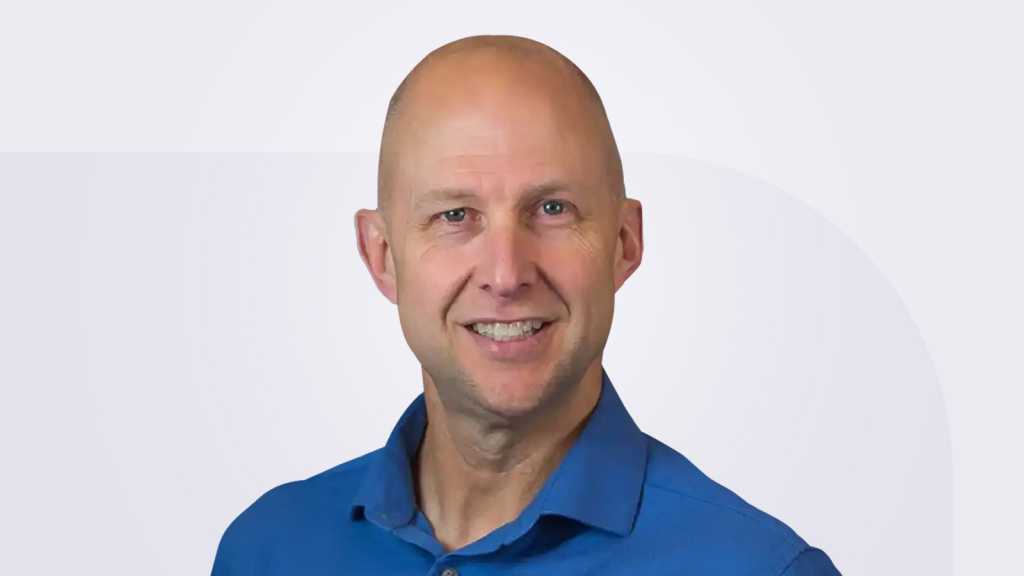Amanda Merola had zero technical background when she came to The Hartford in 2015, despite a natural interest in computers and a proclivity for problem-solving. After stints as a call center representative and claims adjuster, Merola got wind of the HartCode Academy, an internal program designed to help nontechnical employees make the leap into software development.
Merola was accepted into the HartCode Academy’s inaugural class, spending months in bootcamps and self-directed training before landing a position as a junior coder. Fast-forward five years and Merola is now a senior software engineer, writing code, promoting agile practices, and working with business partners to advance The Hartford’s digital agenda.
“The HartCode Academy changed my life and my career path completely,” says Merola. “I never thought I could actually have a career in something that I was interested in outside of what my day-to-day job was at the time.”

Amanda Merola, senior software engineer, The Hartford
The Hartford
The HartCode Academy is just one of several initiatives The Hartford has put in place to recharge its IT talent pipeline. Across industries, companies are experimenting with more creative talent retention and acquisition strategies, including developing a pipeline of IT professionals that have unconventional backgrounds or are sourced from nontraditional applicant pools.
Despite a raft of recent high-tech industry layoffs and some squeamishness about the economy, the IT talent shortage remains an ongoing problem with no real end in sight. The frenetic pace of technology change, coupled with an ongoing shortage of STEM graduates, means there is a persistent dearth of qualified and skilled candidates to fill available jobs. Gartner expects demand for tech talent to continue to outstrip supply through 2026 based on its IT spending forecasts. Moreover, in a recent Gartner survey, 86% of CIOs said they faced stiffer competition for qualified tech candidates while 73% confirmed they were worried about IT talent attrition.
In the 2023 State of the CIO report, IT leaders said they were most concerned about finding qualified experts in advanced areas such as cybersecurity, blockchain, and data science and analytics. Bread-and-butter competencies like technology integration/implementation, IT cloud architecture, and risk/security management were most often called by CIO respondents as most in demand.
“The fundamental difference in this talent war is that previously, it’s been cyclical and this one is structural,” says Tom Connolly, CHRO at worldwide executive search firm Kingsley Gate Partners. “You used to be able to buy people or rely on the education system to pull people through so there was a ready supply of trained technical people. Today, those two strategies are no longer enough. Now, it’s about managing people for who they can be tomorrow, not for who they are today.”
Curating a continuous pipeline
With the digital mandate still front and center, companies are under pressure not only to expand hiring pools, but to step up initiatives to curate existing talent through novel reskilling and upskilling strategies. That’s exactly what The Hartford is doing, having made a conscious choice three years ago to invest in development programs to enrich its own people as well as to position the insurance company as a destination employer to appeal to potential candidates drawn to modern IT environments, according to Deepa Soni, The Hartford’s CIO.
In addition to the HartCode program, The Hartford instituted a 19-week bootcamp to take recently graduated hires through training to become full-stack developers and another 12-week program to build a pipeline for its highly-coveted data engineering role. There is a persona-based training curriculum to upskill staffers in modern engineering-oriented IT practices and a mandate for all managers become cloud certified.

Deepa Soni, CIO, The Hartford
The Hartford
“Fruitful Fridays” carve out time for staffers to participate in training and agile sprint exercises while regular hackathons (winners highlighted in town hall meetings) create an emphasis on innovation and creativity. The goal is for staffers to complete 40 hours of training annually, and about 70% to 80% of IT staffers have complied, Soni says. Since 2020, tech employees have logged over 326,000 hours of training and earned more than 2,200 certifications.
The company also established a hierarchy that enables individual contributors to climb to the highest levels of the IT organization without having to opt for a managerial route — something that wasn’t possible previously, Soni says.
“We’ve worked really hard to create a culture of innovation and collaboration … and to reimagine every part of our talent acquisition strategy, from retention to early career stage to executive-level succession,” Soni says. “Internal talent is gold, and we’re making sure our current employees find places to grow and modernize their skill sets.”
With the tech unemployment rate still remarkably low — it dropped to 1.5% in January according to analysis of US Bureau of Labor statistics by CompTIA — finding seasoned tech veterans to fill posts such as full-stack developers is next to impossible, according to John Hill, senior vice president and chief digital information officer for MSC Industrial Supply Co. Under Hill’s direction, MSC is moving away from a “buy mentality” for recruiting experienced tech talent and is instead committing time and resources to cultivating a steady stream of fledgling workers that will mature into key positions over time.

John Hill, SVP and CDIO, MSC Industrial Supply Co.
MSC Industrial Supply Co.
As part of this strategy, MSC has expanded the number of interns it brings in each summer while allowing interns to work remotely during the school year to foster engagement. Most interns are offered a full-time position upon graduation, working as part of a co-hort, where groups of 15 collaborate and learn the same skills and business processes over the ensuing two to three years. “This provides us with a future funnel as we grow and as people retire or move on,” Hill explains. “I think of it as an inverted pyramid where we’re developing folks that will be ready five years from now.”
MSC is also looking at the veteran community as an under-tapped resource. The company has partnered with Hiring Our Heroes to offer qualified veterans 12-week corporate internships where they develop hands-on experience and get networking and professional training. Many have been offered jobs upon completing the fellowship, Hill says. “Vets have exceptional technical skills from their time in the military, which lends itself to cybersecurity or various infrastructure jobs,” he says.
For Novant Health, students have become an active, yet nontraditional resource for handling certain IT responsibilities. The company’s Student Team Member program enables any part-time or full-time student above the age of 16 to put their hat in the ring for gig-based assignments based on their skillsets and interest areas. Candidates could be in high school, college, or even midlife, taking classes to set course on a different career path. Currently, student team members have worked about 19,000 hours for the healthcare provider, across a range of competencies, and the program has served as a feeder pool for full-time hires, according to Angela Yochem, Novant Health’s executive vice president and chief transformation and digital officer.

Angela Yochem, EVP and chief transformation and digital officer, Novant Health
Novant Health
Consider the network engineering team, which might need to physically go around and check configuration of gear at various remote clinics. “This is something that doesn’t require a lot of training — mostly driving around and laying eyes on an equipment closet,” explains Yochem. “You might have someone in STEM classes who has interest in network engineering and wants some visibility into network operations. It doesn’t make sense to pay a network engineer to do that work.”
Outside-the-box hiring strategies
IT organizations are primarily courting the same talent, therefore it’s important to veer from the standard playbook of higher salaries, more frequent bonuses, or dependence on high-profile recruiters.
Longtime CIO Neal Sample advises peers to abandon zero-sum hiring strategies in favor of novel approaches designed to unearth fresh talent sources. “The uniformity of the approach is its own problem,” explains Sample, now a board member of several companies and a veteran CxO. “The old way of thinking is that tech folks are disposable, like lightbulbs — if they burn out, you just replace them. But that behavior leads to a lot of problems, especially with institutional knowledge held in people’s heads.”

Neal Sample
Back in 2016, Sample, then CIO at Express Scripts, faced a major challenge: He had legacy systems that required COBOL programmers, but much of his team was on the cusp of retirement with no foreseeable backup bench as newcomers were not keen on working on what they viewed as outdated technology. Sample’s IT organization forged a partnership with LaunchCode to create an apprenticeship pathway for second-career technologists to learn COBOL programming skills.
The program was such a success, and it caught the eye of the Obama administration, which cited it as a novel example of high-tech workforce development and retraining. Sample says the initiative taught him the importance of “will over skill” when it comes to tech hiring. “If you simply win a bigger piece of the pie or poach people from competitors, you are ultimately going to run out of talent,” he says.
Positioning the company as a great place to work and staying connected to the larger community are central themes in Novant Health’s IT hiring strategy, according to Yochem. She encourages her management team to get actively involved in the tech community and universities in the Charlotte, NC, area, has established a robust labs innovation program to stay connected to neighboring startups, and participates in local alliances to position the region as attractive to both employees and potential new employers.
“Where we live and work is a blessing and a curse,” she says. “It’s flush with talent, but there’s more competition.”
Making sure the candidate experience and recruitment process is positive goes a long way in attracting strong IT candidates and keeping the pipeline flush, notes Rashmi Kumar, senior vice president and global CIO at Medtronic. The medical device maker has put a lot of energy into streamlining the application process, providing regular communications and using data and automation to identify top candidates and track the effectiveness of hiring strategies.

Rashmi Kumar, SVP and global CIO, Medtronic
Medtronic
“Competitive candidates want faster responses, and the old ways of working with them needs to be revamped to deliver a better hiring experience,” she says.
The single takeaway for CIOs, according to Kingsley Gate Partners’ Connolly: “Stop thinking about finding the round peg to fill the round hole and instead consider the possibility of a new profile that complements everyone on the team.”
Hiring, Staff Management
Read More from This Article: Rethinking the IT talent pipeline
Source: News

